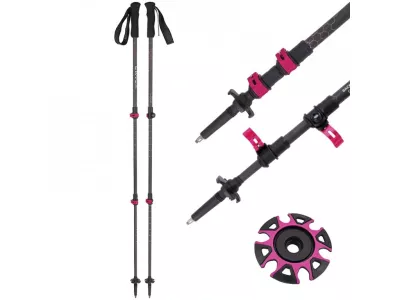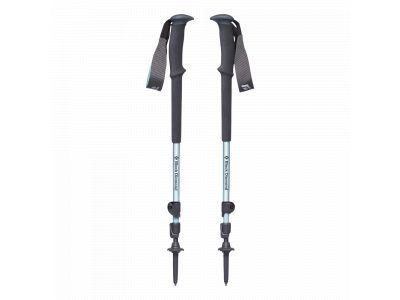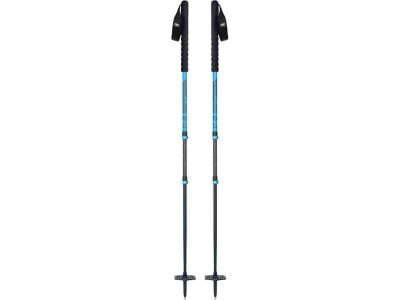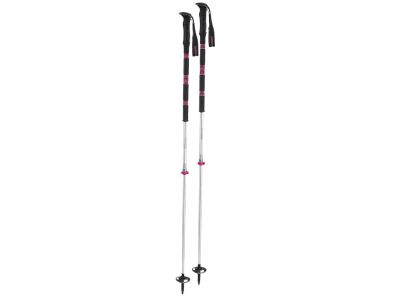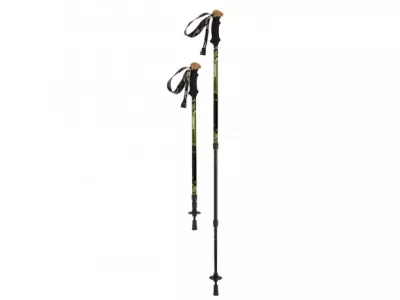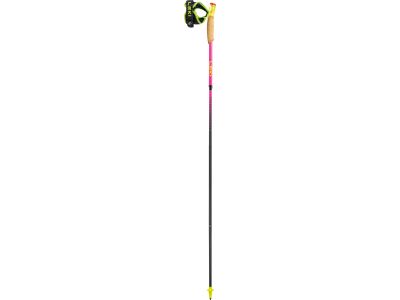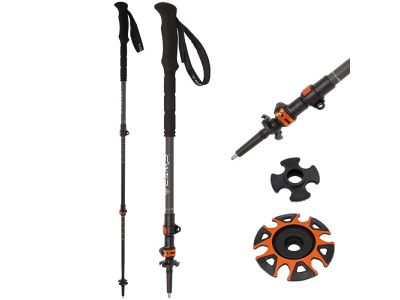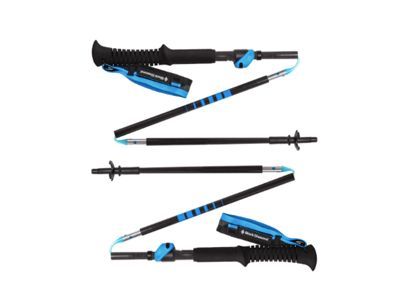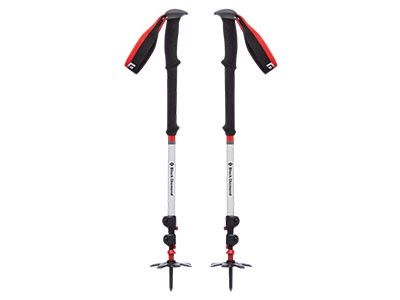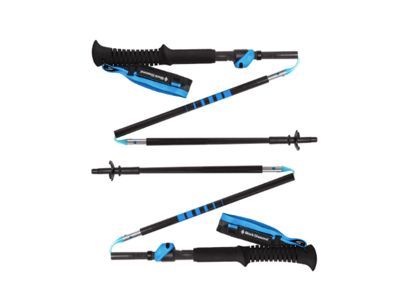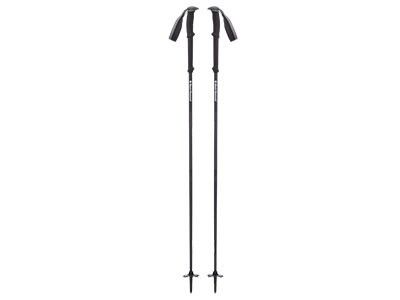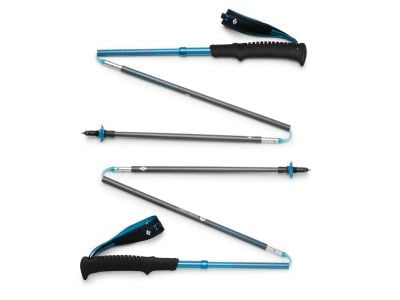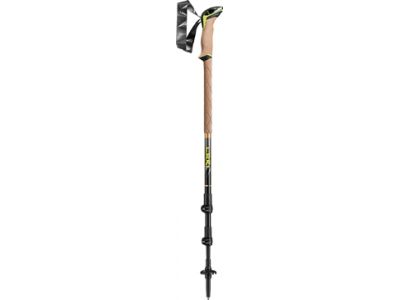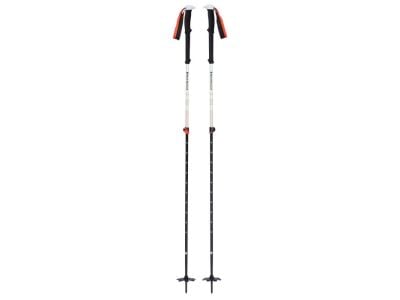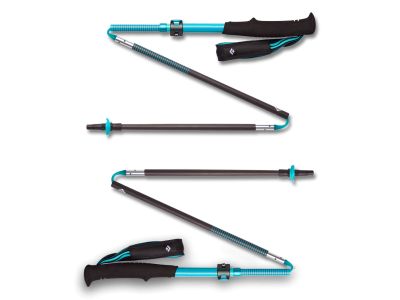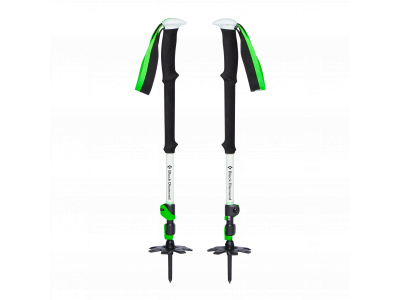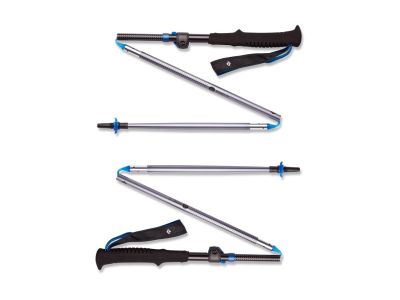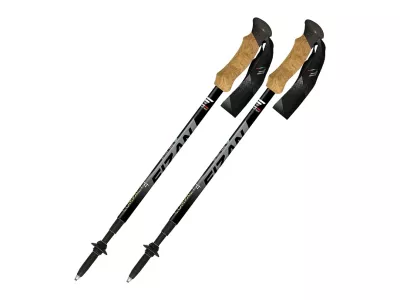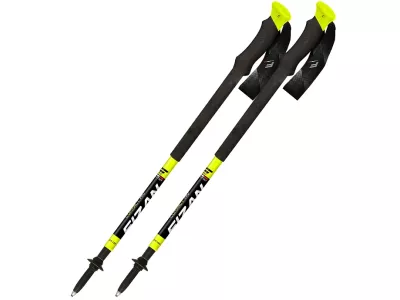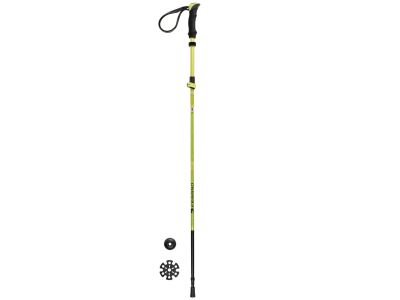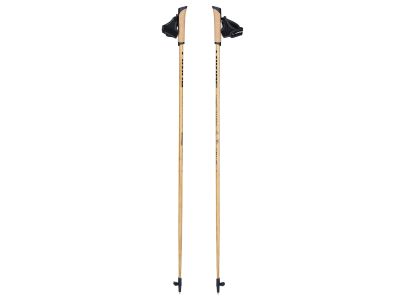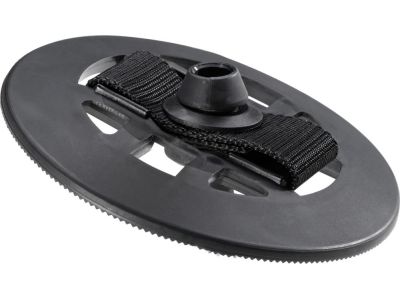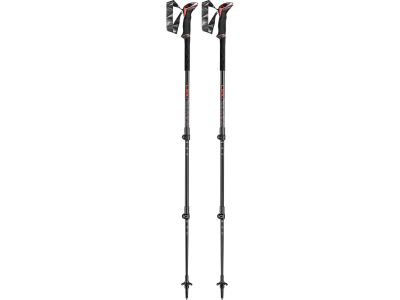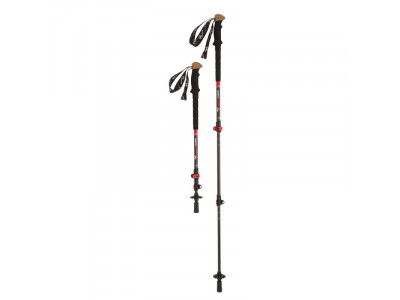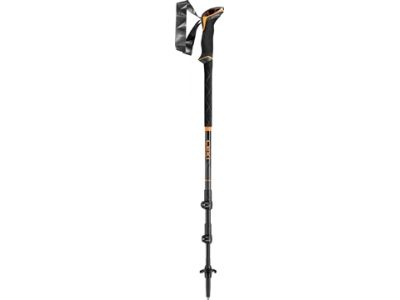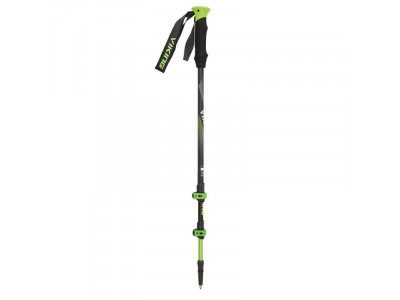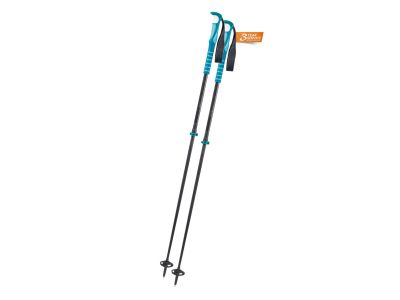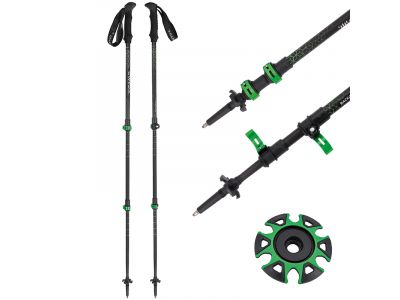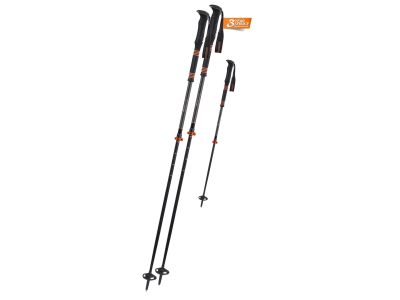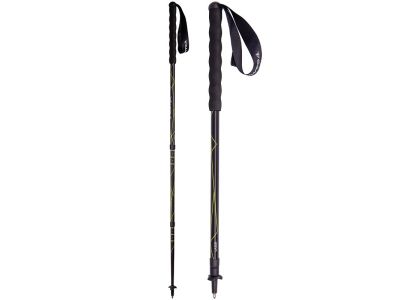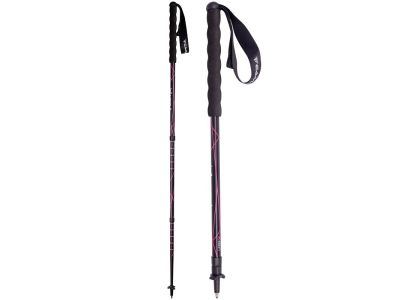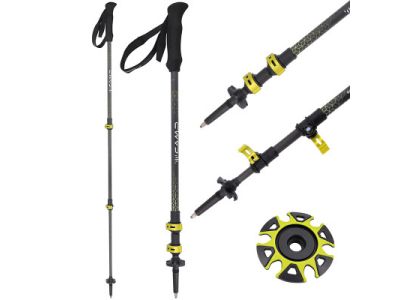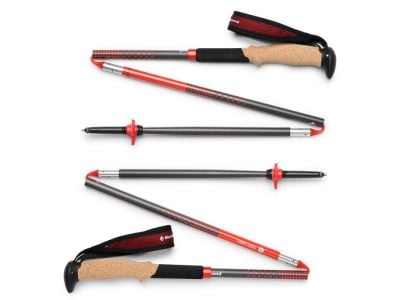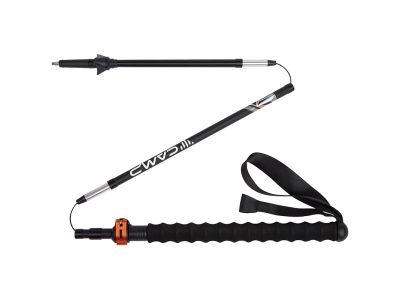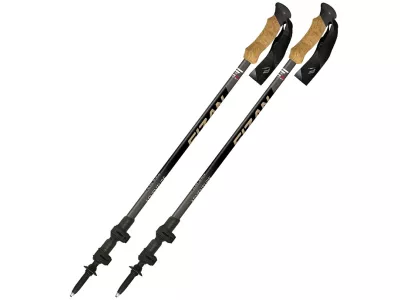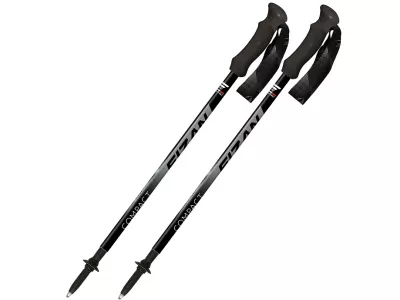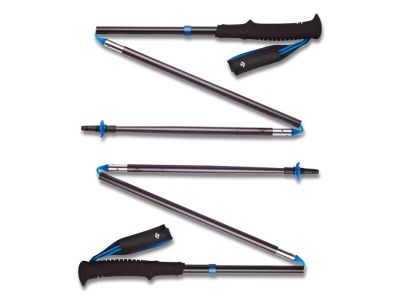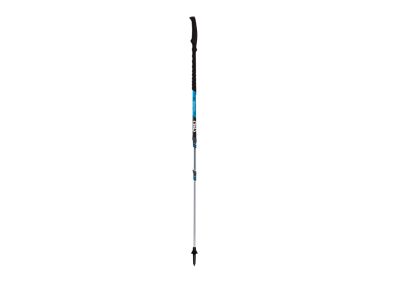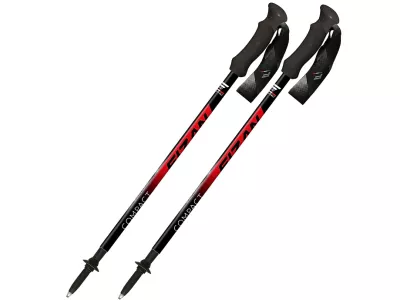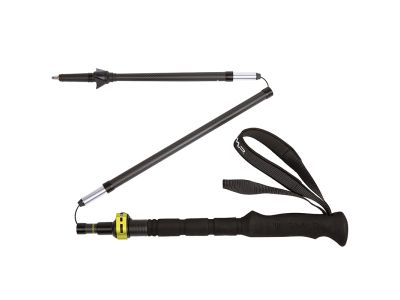Hiking or trekking poles are essential tools for outdoor enthusiasts and hiking enthusiasts. These poles are designed to provide stability, balance and support while hiking, trekking or walking on uneven terrain. They come in a variety of types including telescopic, folding and fixed poles, each with its own design and benefits.
What types of poles are there?
- Telescopic: These poles are a popular choice among hikers due to their adjustable length. The poles can be easily extended or shortened. They typically have three or four sections that slide into each other, similar to a telescope. The poles are made of materials such as aluminium or carbon fibre, which provide a good balance between strength and weight. The individual sections of the poles are connected using locking mechanisms such as twist locks, lever locks, or external locks that securely hold the sections in place when extended. This adjustability allows the length of the pole to be adjusted based on the terrain and the height of the hiker.
- Folding: These poles are designed to be compact and portable. They are usually made up of three or four segments that can be folded together and into a smaller length for convenient storage and transport. Folding poles have a simple folding mechanism that allows users to quickly fold or unfold them.
- Fixed: These poles are one-piece and are the simplest and most durable option. They are typically made from a single piece of material, such as aluminium or carbon fibre, and do not have any adjustable or folding features. Fixed poles are known for their strength and stability, making them suitable for more challenging terrain and intensive use. They are often preferred by experienced hikers or those who need maximum support for balance or stability.
How to choose the right type of hiking poles?
When choosing the right type of poles, be sure to consider these features:
- Adjustability: If you value the ability to customize the length of your poles, telescopic poles are a good choice. They offer the ability to adjust the length, allowing you to find the optimal length for stability and balance based on your height, terrain, and personal comfort.
- Portability: If you prefer compactness and easy transport, folding poles may be more suitable. They are designed to fold into a smaller size, making them very suitable for travellers or hikers with limited storage space.
- Durability: Solid poles, which are one length and have no folding parts, tend to be the most durable option because they have fewer moving parts. If durability is a priority for you, solid poles may be a good choice.
- Terrain and hiking style: Consider the types of terrain you typically encounter during your hikes. Telescopic poles are ideal for hikers who frequently encounter varying terrain, as the adjustable length allows for customization based on specific conditions. Folding poles may be more suitable for day hikers or travellers who don't encounter extremely challenging terrain.
- Weight: Consider the weight of your poles as it can affect your overall hiking experience. Telescopic poles can be a bit heavier due to their number of segments and locking mechanisms.
Are trekking poles necessary for hiking?
Trekking poles are not essential for every hiker, but they can provide a number of benefits such as better stability, less stress on joints, better balance, and greater endurance. They can be especially useful on steep or uneven terrain, on long hikes, or when carrying heavy backpacks.
How to choose the right size of trekking poles?
To choose the right length for your trekking poles, consider your height and the terrain you will be hiking in. When you stand upright with your arms relaxed at your sides, your elbows should be at a 90-degree angle when holding the poles. The adjustability of telescopic poles allows you to fine-tune the length to suit your preferences and the terrain.
How should I use trekking poles?
When using trekking poles, hold them with a relaxed grip and firmly stick them into the ground, slightly in front of you and parallel to your body. Use rhythmic and natural arm swings, coordinating the movement of the poles with your opposite leg.
What types of trekking pole tips are available?
Trekking poles usually come with interchangeable tips. Standard tips are suitable for regular hiking on dirt roads, while rubber tips provide better traction on pavement or hard surfaces. There are also carbide tips for better grip on rocky or icy terrain. Some poles may include snow baskets for better mobility in snow.
